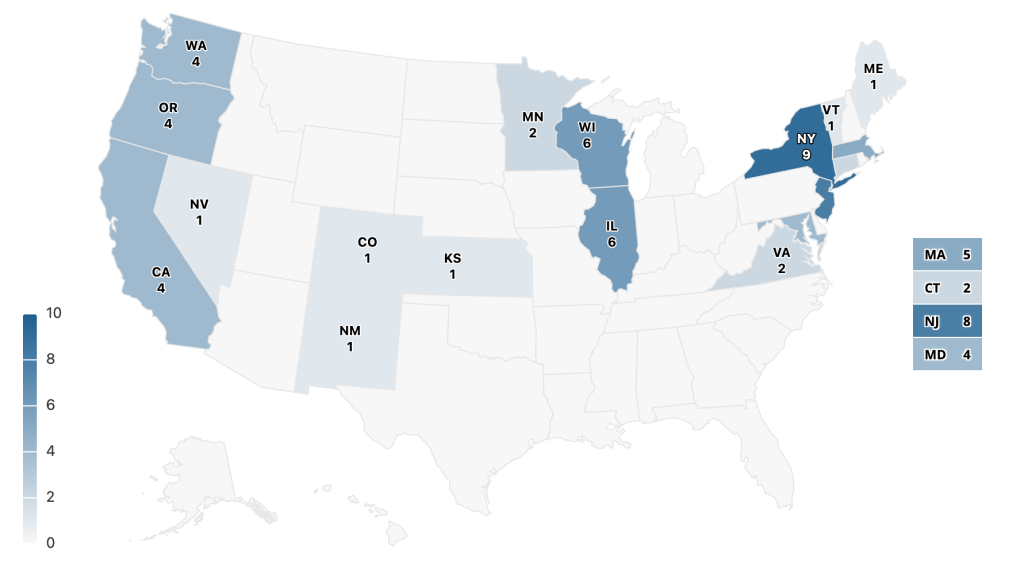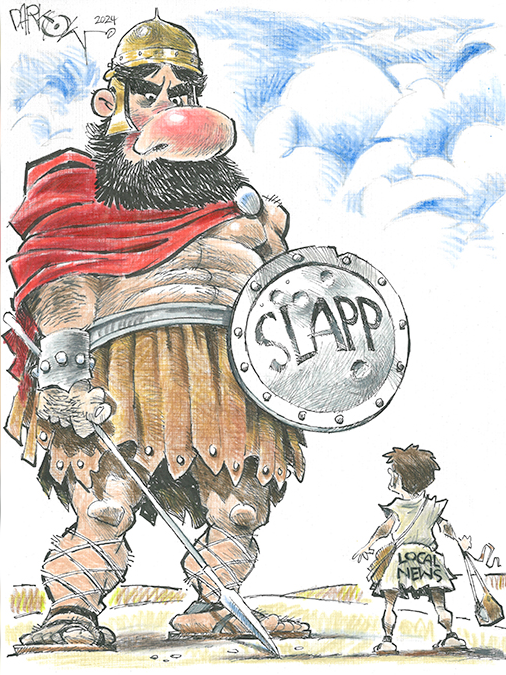
Introducing ‘Public Policy and Journalism’
State-by-state resources to see how state legislatures are working to keep community journalism alive
The Reynolds Journalism Institute at the Missouri School of Journalism has launched Public Policy and Journalism, the home of resources that deepen public understanding of how statehouses are working — or not working — to support journalists and community journalism.
Legislative Efforts to Support Local Journalism, an interactive, searchable resource that provides information about bills supporting the local journalism industry, is now live on that page. From news managers and reporters to members of the public, those interested in tracing state support efforts can conveniently see both failed and successful bills introduced in state legislatures, making it easier to identify trends and opportunities that could lead to more effective legislation. The resource was developed by Jared Schroeder, an associate professor at the School of Journalism, and his team.
“Exploring new revenue models and audience engagement tactics is important — we do that every day at RJI — but you’re missing a growing part of the picture if you aren’t paying attention to what is happening in statehouses,” said Randy Picht, executive director of RJI. “Bringing all this information together in one place can help the industry learn from failures and repeat the successes at a time when community journalism is at a crossroads.”
Users can view a U.S. map showing the number of relevant bills introduced in each state. Clicking on a state will show detailed information about each bill, including those that have failed to pass.
The map is not without blank spaces. Alternative methods state governments have used to support local journalism, such as adding line items to the overall state budget, are not currently reflected on the page but will be added in a future update. And while momentum is growing, not all states have introduced relevant bills.
The resulting patchwork of legislation resembles an issue at the center of another new resource on RJI’s website, dovetailing with additional efforts by Schroeder to develop a state-by-state guide to anti-SLAPP laws. (Strategic Lawsuits Against Public Participation, or SLAPPs, are frivolous or malicious lawsuits designed to intimidate news organizations and others into silence.)
The guide was developed by Schroeder’s team in partnership with the Society of Professional Journalists and was originally intended as an expansion of a guide provided by the Reporters Committee for Freedom of the Press. It provides both explanations of anti-SLAPP laws and — in their absence — overviews of cases that demonstrate potential options or tactics that news organizations can utilize if targeted.
“We think of attacks on journalists in this era of polarization, but there are additional concerns like SLAPPs,” Schroeder said. “They allow for this power differential; those with the means punish publishers can censor journalists.”
Schroeder and his team will also contribute articles to the Legislative Efforts resource to put legislative trends into context.
Together, these resources help fill in a nationwide picture of how state legislatures are an increasingly important piece of efforts to protect and support journalism that informs and educates small communities all over the country.
Cite this article
Fitzgerald, Austin (2025, Oct. 9). Introducing ‘Public Policy and Journalism’. Reynolds Journalism Institute. Retrieved from: https://rjionline.org/news/introducing-public-policy-and-journalism/

